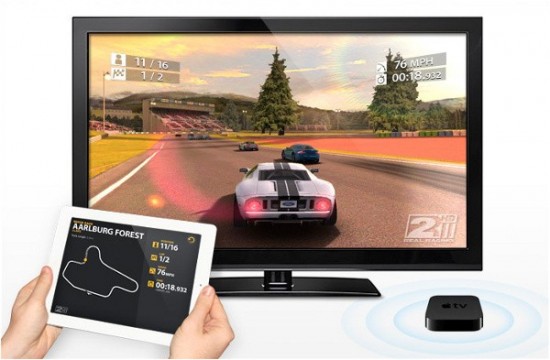AirPlay, a wireless media technology from Apple featured on the Apple TV, iPhones, iPads, iPods and newer Macs running OS X Mountain Lion, is a major selling point because it allows users to seamlessly beam their photos, music and video from their computer or iDevice to a TV set via an Apple TV set-top box. However, Netflix teamed up with Google’s YouTube on an AirPlay alternative and today the two have released official details.
DIAL, as it’s called (an acronym for DIscovery And Launch), is an open second screen protocol which automatically discovers compliant devices to stream media. The new standard has impressive support from key content owners and consumer electronics makers, including the likes of BBC, Sony, Hulu and of course Samsung…
According to the DIAL web site, it’s a “simple protocol that 2nd screen devices can use to discover and launch apps on 1st screen devices”.
The second screen device is typically a mobile device like a smartphone or tablet and the first screen device is any compatible TV set, set-top box, Blu-ray player or other DIAL-compliant device.
This means, for example, that you could use the Netflix app on your tablet to discover Netflix-compatible output device like a TV set and then directly stream movies to it, no intermediate device required like with AirPlay.
GigaOM gives us another example:
PS3 owners can already browse Netflix’s catalog on their smartphone and then launch those titles on the game console, but they have to first manually launch the app on both devices.
With DIAL, the Netflix app on your phone will automatically discover that there is a device with a Netflix app connected to your TV. It will fire up that app, and then the two apps are free to do whatever they want — which presumably involves some healthy binge-viewing.
If you’re hungry for some nitty-gritty, DIAL discovers compatible devices via UPnP multicast while app launching is handled by the REST service.
But how does DIAL stack up against AirPlay?
For starters, you don’t need a third device like the Apple TV because both with DIAL, both screen devices are capable of running apps. This also means you will have to buy a TV set, set-top box, Blu-ray player or some other Netflix-compliant device.
With Apple, you must own an Apple TV to take advantage of AirPlay.
The $99 set-top box can mirror whatever is displayed on your Mac or iOS device on your TV screen. Screen-sharing abilities are not part of DIAL, but developers can specifically implement that in their apps. Apple’s little puck can also accept URLs from a Mac or iOS device to initiate playback of remote content.
DIAL supports neither feature.
On the other hand, AirPlay cannot tell another device to launch a required app automatically, though Apple is probably working on extending the feature set of AirPlay.
DIAL will also be able to detect whether an app is installed, and redirect a user to a smart TV’s app store in case it’s missing. Also cool: DIAL will be able to launch web apps on your TV, if the device supports it, which should add a whole lot of new functionality to connected devices.
Oh, and Chrome support for DIAN is also being worked on, which would make it easy to launch apps on your TV straight from the Chrome browser.
Summing up, DIAL is an interesting step in the right direction.
As ubiquitous as DLNA standard is, it doesn’t always work as intended as some setup and basic networking knowledge is needed and it’s not supported on Apple’s devices out of the box, though credible third-party apps exist to add that functionality.
I have no doubt in my mind that DIAL will take off – not just for its backing by Google and Netflix, but also because a number of big names in tech and media seem ready to embrace it.
All current-generation Google TV devices already support some parts of DIAL, for example, as do some 2012 Samsung and LG TVs. In fact, Sony and Samsung are expected to include DIAL in many of their products going forward as both companies were apparently instrumental in testing DIAL during its development.
DIAL features can also be added to existing non-compatible devices via software updates.
http://www.youtube.com/watch?v=oXsEpfnUFNE
As much as I love AirPlay, and despite Apple’s co-operation with the likes of Denon, JBL and others, third-party accessories supporting AirPlay are still few and far between. For example, I could never justify buying a speaker with AirPlay support because I also own non-Apple devices.
Bluetooth is ubiquitous and prevalent so most of my audio streaming goes through Bluetooth-enabled gear. Yes, I own an Apple TV and use it everyday to AirPlay games, apps and my media though Apple could easily make our lives easier by adopting DIAL.
Not that it’s going to happen any time soon…


